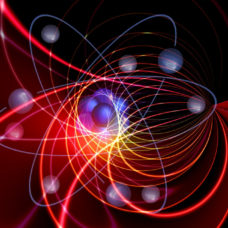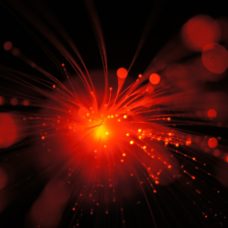Researchers have set a new record in data transfer efficiency via superdense coding, which involves using the quantum properties of particles (photons, protons, and electrons) to store and transmit as much quantum data as possible.
The #ORNL set a record of 1.67 #qubits data transfer on a #fiberoptic cable. Click To TweetConventional Bits and Quantum Bits
Conventional computers use bits. A bit is a binary information unit which can be either 1 or 0 at one time. To store a bit, many methods exist from using the physical properties of the materials. Quantum computers, however, use qubits (quantum bits) which reflect the quantum properties of matter.
A qubit is the quantum state that represents the quantum information storage unit (quantum data). A memory with qubits differs significantly from a conventional memory. While a bit can only take values 0 and 1, and only one at a time. A qubit does not have this restriction, consisting of a linear quantum superposition of two basic states. A particle makes quantum leaps to pass from one energetic state to another. The quantum state of a qubit can be known only by observation; without an observer, a qubit can be both 0 and 1 at the same time.
New Record in Quantum Data Transfer Efficiency
ORNL researchers rushed to transfer 1.67 qubits on a fiber optic cable, which is a new record in quantum data transfer efficiency. As a demonstration, the team transferred the ORNL logo. The previous record was in the order of 1.63 qubits.
The team–Brian Williams, Ronald Sadlier and Travis Humble–published their paper titled “Superdense Coding Over Optical Fiber Links With Complete Bell-state Measurements” in Physical Review Letters.
Williams and his team are the first to use superdense encoding on fiber optics, which is a major advance in the quest for the adoption of quantum communication. Using common equipment, such as fiber optic cables and standard detectors, they made the technique even more convenient.
This work of the ORNL team is a necessary step towards the creation of the complex circuits of quantum photonics to quantum networks a reality.
The term “quantum communication” is recent and refers to a field of research that has exploded over the last few years.
Now perceived as strategic research because of its high reward potential, quantum communication will disrupt the society and the world as we know it. Photons have very low interaction with the environment, unlike electrons, and don’t lose energy when they travel great distances. Photons are therefore very suitable for transporting information.
A quantum data network based on photons will encode considerable amounts of information while ensuring confidentiality of communications and maximum security.



















Comments (0)
Least Recent